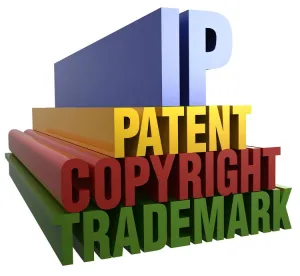On November 16, 2017 the U.S. Patent and Trademark Office posted a new Standard Operating Procedure (SOP) addressing the conduct of cases remanded from the Federal Circuit to the Patent Trial and Appeal Board (PTAB). New “SOP 9” provides instructions to panels of the PTAB as well as guidance to the public on how remand proceedings are to be conducted. At a high level, the new SOP seeks to formalize the criteria for authorizing additional briefing, the introduction of new evidence, and the availability of additional oral hearings. The SOP confirms the PTAB’s goal of completing remand proceedings within six months of the Federal Circuit’s mandate. The SOP also directs panels of the PTAB to proactively consult with the Chief Judge, the Deputy Chief Judge, or one of the Vice Chief Judges within a month of the Federal Circuit decision. The SOP explains that this consultation procedure is intended in part to allow PTAB leadership to consider whether an expanded panel and precedential designation are warranted.
Because the SOP has not been formally promulgated, it does not have the force of law. Nevertheless, it provides important guidance to those involved in remands on how the PTAB will conduct remand proceedings. First, the SOP provides that parties in remanded trial cases are to contact the PTAB within ten business days after the Federal Circuit’s mandate. Second, the SOP indicates that teleconferences with the parties and the PTAB should take place within a month of the mandate. Third, prior to communicating with the PTAB, the SOP asks the parties to meet and confer “in a reasonable and good faith attempt to propose a procedure on remand.” The issues that the parties are expected to consider are:
(1) whether additional briefing is necessary;
(2) subject matter limitations on briefing;
(3) the length of briefing;
4) whether the parties should file briefs concurrently or sequentially;
(5) if briefs are filed sequentially, which party should open the briefing;
(6) whether a second brief from either party should be permitted;
(7) the briefing schedule; (8) whether either party should be permitted to supplement the evidentiary record;
(9) limitations, if any, on the type of additional evidence that will be submitted;
(10) the schedule for submitting additional evidence, if any; and
(11) any other procedural issues.
The SOP categorizes the issues on remand (e.g., erroneous claim interpretation, failure to consider the evidence, inadequate explanation by the PTAB, erroneous application of law, lack of due process or denial of APA rights, improper consideration of the arguments) and then indicates whether additional briefing, new evidence, or an additional oral hearing is likely to be allowed in each scenario. In the case of remanded PTAB trial proceedings (i.e., inter partes review, covered business method review, post-grant review, and interferences), additional briefing is likely to be authorized in every category except for “inadequate explanation” by the PTAB. The SOP notes that additional evidence— which may itself require additional briefing to address objections and require cross-examination—is unlikely to be allowed in any scenario unless there has been a due process or APA violation that justifies reopening the record. The same applies to additional oral hearings, which are unlikely to be authorized unless it is necessary to afford due process.
The above guidance differs for remands of ex parte examination (i.e., patent applications) and ex parte reexaminations. For those examinational proceedings, as distinct from PTAB trials, prosecution will not ordinarily be reopened unless there has been a due process violation that requires the applicant or patent owner to file a response (e.g., to a new ground of rejection).
The SOP also addresses the impact of a party’s attempt to obtain Supreme Court review. It states that “[i]n all cases, absent good cause, proceedings on remand generally will not be stayed once the Federal Circuit has issued its mandate, even when a party has petitioned the Supreme Court for a writ of certiorari.” It provides that in trials, a party may contact the panel and request authorization to file a motion to stay the remand for this reason. The panel may order briefing on the issue or resolve it through a conference call. The primary consideration will be whether any judgment by the Supreme Court would impact the PTAB’s decision on remand.
In the case of trials, the SOP generally notes that remand procedures are guided by the scope of the remand, the substance of the Federal Circuit’s decision (e.g., its reasoning and instructions), as well as considerations of efficiency and economy “to secure the just, speedy, and inexpensive resolution of every proceeding.” 37 C.F.R. § 42.1(b); see also 35 U.S.C. §§ 315(b), 326(b). With these overarching considerations in mind, the PTAB is likely to continue its existing practice of entertaining focused briefing limited to issues remanded to it by the Federal Circuit. The PTAB is unlikely to allow additional evidence or another oral hearing unless due process requires it. As was the ad hoc practice prior to this SOP, parties should meet and confer promptly after a Federal Circuit decision and plan to contact the PTAB within in ten business days of mandate to secure whatever process they believe is needed to resolve outstanding issues.
This SOP also creates an interesting process for having PTAB panels consult with PTAB leadership to evaluate whether a decision should be designated precedential. The SOP explains that the Chief Judge may elect to expand the panel assigned to the remanded case to, for example, address an issue of “importance.” The SOP highlights that this may occur where a remanded case involves any “novel, evolving, or contentious issues of law or policy (i.e., not limited to the particular case) or raises any issues of particular importance to the Office or the patent community.” It remains unclear what level of deference “precedential” designations will receive upon review by the Federal Circuit, but this new initiative to identify candidates for a precedential designation suggests that the Office is interested in using it more frequently.






 />i
/>i

